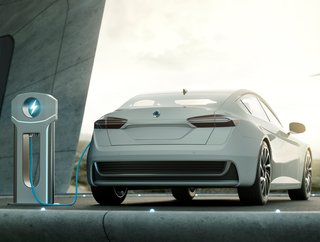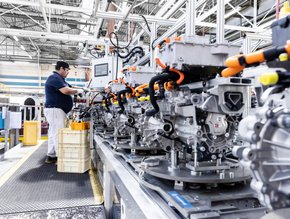Technology is Driving E-mobility Into the Mainstream

From the adoption of electric vehicles (EVs) to the rise in e-scooters, e-mobility is rapidly growing.
Today’s car drivers are buying EVs at a record pace, undeterred by rising costs or long lead times. According to research by EY, sales of EVs doubled in 2021 and jumped 55% in 2022, in total accounting for 13% of all vehicle sales. The same year EV sales in China reached 27% of total vehicles sold, while in Europe, they made up just over 20%. And, in the US, EV sales increased to more than 7% of all vehicle sales.
This increase in sales is reflected in a noticeable variation of EV models across automakers' lineups. In January, BMW Group announced that its Munich plant would produce exclusively all-electric models from the end of 2027,. This comes as Original Equipment Manufacturers (OEMs) adapt their vehicle lineups to meet deadlines for EV transitions – with the European Union famously mandating the endof CO2-emitting car sales by 2035.
“In one sense electric mobility has become mainstream, it’s dominating the narrative in the automotive industry – all you need to do is look at the number of automakers adding new EV models to their existing lineups,” says Alexandre Audoin, Head of Global Automotive Industry at Capgemini. “On the other hand, there’s still a long way to go until the adoption of EVs is widespread.”
Key challenges, Audoin highlights, involve advancing battery technologies to alleviate ongoing concerns about range, the rollout and availability of charging infrastructure and the absence of standardised charging technologies. “I’d also add that cost remains a large hurdle for consumers, especially given concerns about the long-term performance of batteries which, over time, could affect re-sale prices,” he says.
David Hall, VP of Power Systems at Schneider Electric UK&I, emphasises the need for a robust infrastructure to incentivise consumers to make the switch.
“However, the quantity of chargers is just one aspect,” he says. “The primary challenge lies in establishing a connected infrastructure that enables effective visibility of charger availability and reliability of operation.
“We now have intelligent software providing crucial insights into equipment performance and enabling intelligent adjustments to the energy dispensed the chargers. This is a significant piece of the puzzle in ensuring optimal and efficient operation.”
E-mobility: A viable solution for long-distance transportation?
As Audoin highlights, there is a misconception that e-mobility is not a viable solution for long-distance transportation, largely owing to range anxiety and charging infrastructure. But, as he describes, e-mobility constitutes an important component in OEMs' efforts to reduce emissions. However, this segment of OEM portfolios’ is not growing as fast as it needs to.
“Making long-distance, EV-powered vehicles a reality can’t be done in isolation, nor by one OEM alone,” he says. “Collaboration must be fostered with a wider range of ecosystem partners, including governments, to make the Total Cost of Ownership (TCO) of EVs more attractive to cost-conscious buyers.”
According to Ken McMeikan, CEO of UK motorway services company Moto Hospitality, the future of the e-mobility sector is exciting and challenging in equal measure, and ‘should be recognised as a viable future solution for long-distance transportation’.
“Further rapid market growth, huge technological advancements and intense competition across the whole value chain is coming,” he says. “Vehicle technology will rapidly evolve to enhance performance and reduce costs. Charging technology will evolve to satisfy improvements in vehicle and battery technology, and improve utilisation across all vehicle types and use cases.
“From an infrastructure perspective, our focus will be on building high quality, future-proofed charging infrastructure at pace. That is how we can help get the UK to a point where e-mobility can support long-distance road transportation across the board. But before we get there, we need sufficient power in the right places to supply those chargers and the right support from the Government and power companies to get it.”
E-vehicles and the security risks
With McKinsey research predicting that electrified passenger vehicle sales will reach 40 million in 2030, Audoin warns that, despite relentless competition, OEMs must remain vigilant and understand that speed to market can never take priority over safety and security.
“Assisted and autonomous mobility can offer comfortable, convenient, and stress-free travel,” he says, “but they also take a significant degree of responsibility for the safety of passengers; meaning the systems mustn’t fail, and t they must be protected from potential cyber threats.
“What’s key to understand here, is that these advanced features bring an extraordinary amount of data and meta-data, which is fed in from the vast array of sensors and cameras. Plus, digital assistance, infotainment systems, subscriptions, services, integrated payment solutions and so on, all of which typically produce a large amount of data and require a certain degree of data sharing.
“All of this feeds in together to create what’s essentially a data centre on wheels – with more possibilities for defects, and an increased attack surface for cyber threats.
“To facilitate these high expectations for advanced features and maintain a ‘zero compromise’ approach to safety and security, OEMs must consider the end-to-end vehicle and its surroundings as one digital profile – from chip to cloud – building robust and secure data ecosystems with cybersecurity prioritised at every point.”
******
Make sure you check out the latest edition of Technology Magazine and also sign up to our global conference series - Tech & AI LIVE 2024
******
Technology Magazine is a BizClik brand
- Capgemini: Businesses are incorporating GenAI into marketingAI & Machine Learning
- Capgemini: Gen AI accelerating software-led transformationsEnterprise IT
- Education crucial to tackling the ongoing digital skills gapDigital Transformation
- Top 10 Consulting Firms Powering the World of TechnologyDigital Transformation







